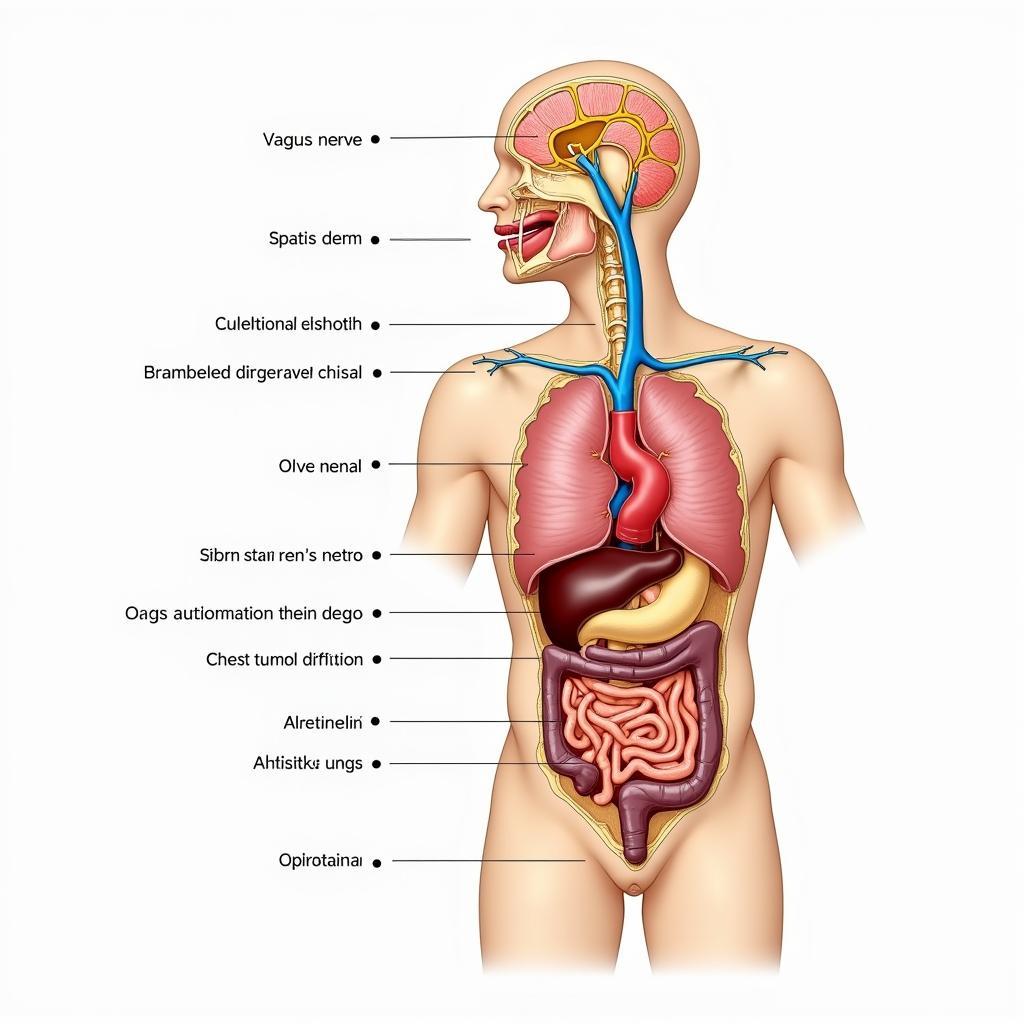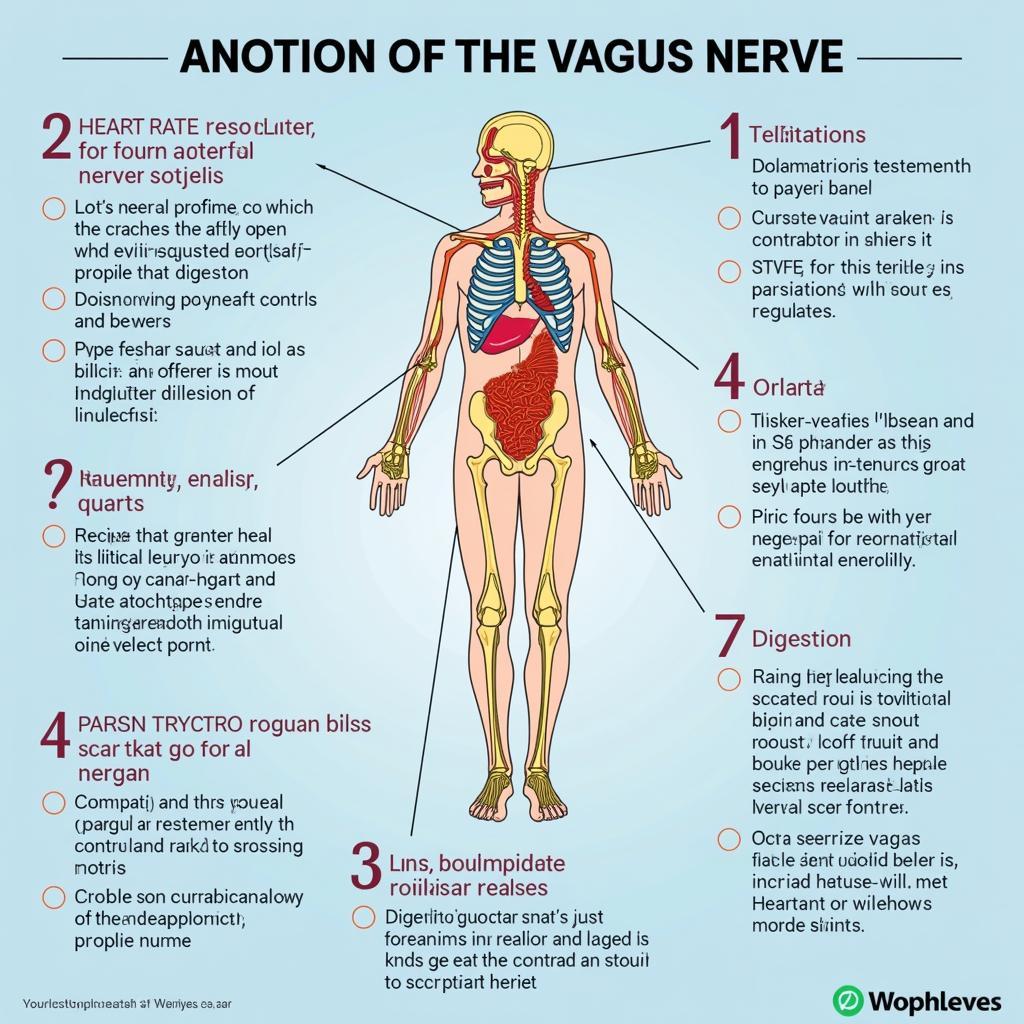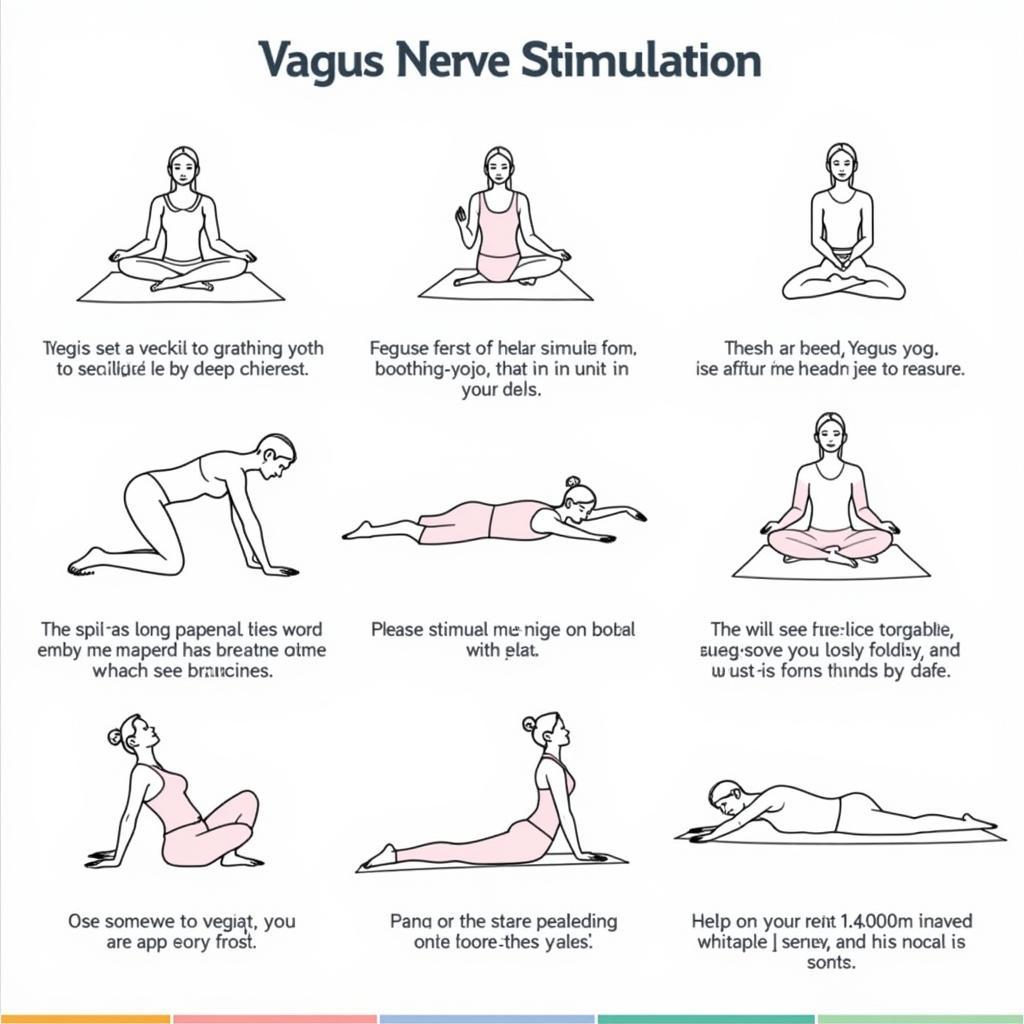The vagus nerve, a crucial part of your body’s parasympathetic nervous system, plays a vital role in regulating many bodily functions. Understanding where the vagus nerve is located is key to appreciating its influence on your overall health and well-being.
Understanding the Vagus Nerve’s Location and Function
The vagus nerve, also known as the tenth cranial nerve (CN X), is the longest and most complex of the 12 pairs of cranial nerves that emanate from the brain. It’s a mixed nerve, meaning it carries both motor and sensory information. This “wandering nerve,” as its name suggests (vagus means “wandering” in Latin), travels a long path from the brainstem down through the neck, chest, and abdomen, touching various organs along the way.
 Diagram of the Vagus Nerve Path
Diagram of the Vagus Nerve Path
Tracing the Path of the Vagus Nerve
The vagus nerve originates in the medulla oblongata, a part of the brainstem. It then exits the skull through an opening called the jugular foramen. From there, it travels down the neck alongside the carotid artery and jugular vein. In the chest, the vagus nerve branches out to innervate the heart and lungs. It then passes through the diaphragm and into the abdomen, where it branches further to connect with the stomach, intestines, liver, and other organs.
Vagus Nerve Branches and Their Targets
The vagus nerve has several branches that reach different organs, each serving specific functions. These include branches to the:
- Heart: Regulates heart rate and blood pressure.
- Lungs: Controls breathing rate and depth.
- Digestive system: Influences digestion, gut motility, and satiety.
- Liver: Plays a role in glucose regulation.
- Kidneys: May influence blood pressure and fluid balance.
The Vagus Nerve and its Importance
The vagus nerve is a key player in the parasympathetic nervous system, often referred to as the “rest and digest” system. It counteracts the effects of the sympathetic nervous system, which is responsible for the “fight-or-flight” response. By regulating various bodily functions, the vagus nerve helps maintain homeostasis, or balance, within the body.
 Functions of the Vagus Nerve
Functions of the Vagus Nerve
Vagus Nerve Stimulation and its Potential Benefits
Stimulating the vagus nerve can have therapeutic effects on certain conditions. Vagus nerve stimulation (VNS) therapy, a medical procedure involving a small implanted device, is used to treat epilepsy and depression. Other methods of vagus nerve stimulation, such as deep breathing exercises and meditation, are being explored for their potential benefits in managing stress, anxiety, and other health issues.
The Vagus Nerve and its Connection to Overall Well-being
The vagus nerve’s intricate connections throughout the body highlight its vital role in maintaining overall health. A well-functioning vagus nerve contributes to:
- Improved digestion: By promoting gut motility and enzyme secretion.
- Reduced inflammation: By modulating the immune response.
- Lowered heart rate and blood pressure: Contributing to cardiovascular health.
- Better mood and reduced anxiety: By influencing neurotransmitter release.
 Vagus Nerve Stimulation Techniques
Vagus Nerve Stimulation Techniques
Conclusion
The vagus nerve, located from the brainstem down to the abdomen, is a critical component of the nervous system, influencing numerous bodily functions. Understanding its location and functions provides insight into its profound impact on overall health. By taking care of your vagus nerve through healthy lifestyle choices, you can support its optimal function and contribute to your overall well-being. Remember, a healthy vagus nerve is a key to a healthier you.
FAQ
- What does the vagus nerve do? The vagus nerve regulates many bodily functions, including heart rate, breathing, digestion, and immune response.
- How can I stimulate my vagus nerve naturally? Deep breathing exercises, meditation, yoga, and cold exposure can stimulate the vagus nerve.
- What are the symptoms of vagus nerve damage? Symptoms can include difficulty swallowing, hoarseness, changes in heart rate, and digestive problems.
- Can the vagus nerve be repaired? In some cases, surgery or other medical interventions may be necessary to address vagus nerve damage.
- Is vagus nerve stimulation safe? VNS therapy is generally considered safe, but like any medical procedure, it carries potential risks.
- How does the vagus nerve affect mental health? The vagus nerve plays a role in regulating mood and anxiety levels.
- What are some other names for the vagus nerve? It’s also known as the tenth cranial nerve (CN X) and the wandering nerve.
Need Support? Contact TRAVELCAR
When you need transportation assistance in Hanoi, contact TRAVELCAR for airport transfers, city tours, and more. We offer a range of vehicle options, including 16-seater, 29-seater, and 45-seater buses.
Contact us:
Phone: 0372960696
Email: TRAVELCAR[email protected]
Address: 260 Cau Giay, Hanoi
We have a 24/7 customer service team ready to assist you.
Explore More with TRAVELCAR
Discover more about Hanoi’s hidden gems and plan your perfect trip with our other helpful articles on our website. Check out our guides on local cuisine, historical sites, and exciting activities.

